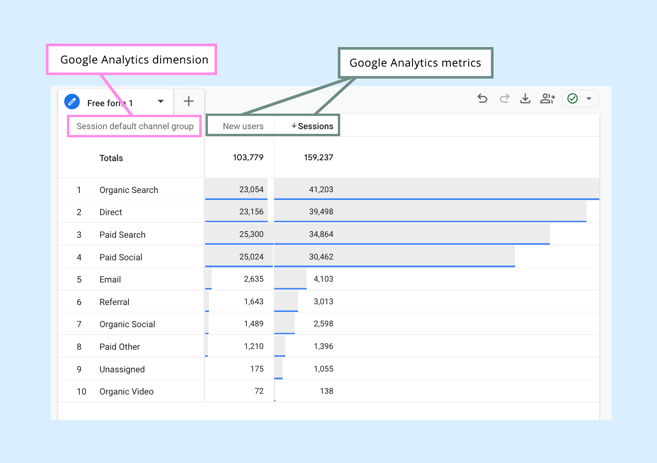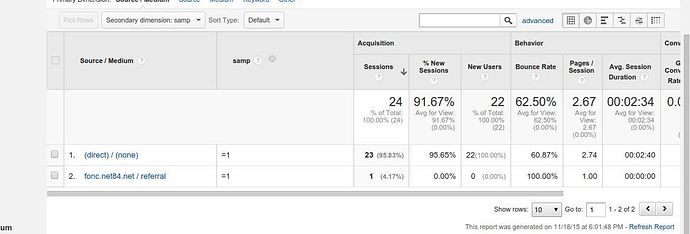Debunking the 'Secondary Dimension' in Google Analytics: Key Insights
Browsing the Midst of Additional Measurement in Google Analytics: A Thorough Expedition on Its Capability
Additional dimensions, though seemingly uncomplicated at initial look, nurture a wide range of untapped prospective waiting to be harnessed. As we begin on this trip to discover the nuanced capability of secondary measurements, we will discover just how this attribute can illuminate patterns, reveal correlations, and ultimately lead the means for educated decision-making in the digital landscape (what is a “secondary dimension” in google analytics?).
Understanding Secondary Dimensions in Google Analytics

Recognizing exactly how additional dimensions job is vital for leveraging the full power of Google Analytics. These dimensions aid you answer more complex questions about user habits and the performance of your internet site content and advertising initiatives. You can use additional measurements to analyze which browsers or devices are most typically used by visitors that make an acquisition, or to compare the bounce prices of different web traffic sources. By integrating main metrics with additional dimensions, you can gain valuable understandings that drive notified decision-making and optimization strategies - what is a “secondary dimension” in google analytics?.
Leveraging Additional Measurements for Information Evaluation
Building upon the fundamental understanding of exactly how second dimensions improve information analysis in Google Analytics, the application of these added layers of info becomes vital in drawing out important understandings for educated decision-making and optimization strategies. By leveraging additional measurements, experts can dig much deeper right into the performance metrics by including more context to the key dimensions, thus uncovering concealed patterns and connections that might not appear at initial glimpse. This deeper degree of analysis makes it possible for organizations to much better comprehend individual behavior, identify trends, and determine locations for renovation.
Additionally, additional measurements supply a more extensive sight of the information, permitting division based on numerous criteria such as demographics, devices, web traffic sources, and a lot more. This segmentation assists in a more granular analysis, allowing companies to customize their campaigns and approaches to particular audience sectors for enhanced targeting and personalization. Fundamentally, the tactical use of secondary measurements encourages companies to make data-driven choices that drive growth and success in the digital landscape.
Advanced Methods for Additional Measurement Execution
Exploring detailed methods to harness the complete possibility of secondary measurements in Google Analytics elevates the depth and sophistication of data analysis for tactical decision-making. One sophisticated technique for carrying out secondary dimensions is the use of custom-made dimensions. In addition, incorporating second measurements with sophisticated sections can supply also much more granular insights by applying several layers of division to the information.
Interpreting Insights With Second Dimensions

When translating insights with second measurements, it is vital to think about the context of the information and exactly how different dimensions engage with each other. For instance, understanding which details web traffic sources cause higher conversion rates or identifying which gadgets users favor for making acquisitions can supply workable understandings for enhancing advertising projects and enhancing general site efficiency. By very carefully taking a look at the data with secondary measurements in mind, organizations can make educated decisions that drive meaningful outcomes and improve their digital presence.
Optimizing Efficiency With Second Dimensions

One key way to optimize performance with second measurements is by segmenting data extra granularly. This permits you to separate certain factors that may be influencing your metrics discover this info here and get a better understanding of what drives success or failing in your electronic efforts. By integrating additional dimensions such as 'device group' and 'touchdown page,' you can determine which tool kinds are most efficient for certain touchdown web pages, enabling you to customize your methods as necessary.
In addition, utilizing additional measurements can help you determine trends, patterns, and correlations that may not appear when analyzing data with main measurements alone. This much deeper level of evaluation can bring about more educated decision-making and ultimately improve the overall efficiency of your web site or digital marketing projects.
Final Thought
Finally, second dimensions in Google Analytics play a critical role in improving data evaluation and offering deeper insights right into site performance. By utilizing sophisticated techniques and translating the information effectively, businesses can enhance their strategies and boost total efficiency. Recognizing the performance of second dimensions is crucial for making notified choices and driving success in the electronic landscape.
By leveraging secondary measurements, experts can dig deeper right into the performance metrics by adding more context to this hyperlink the primary dimensions, thus uncovering concealed patterns and connections that might not be obvious at very first look. One innovative method for official site implementing secondary measurements is the usage of customized measurements.Having grasped innovative methods like custom-made dimensions and regex for additional measurement execution in Google Analytics, the next vital step is analyzing the useful understandings derived via these sophisticated information segmentation techniques. Analyzing understandings via additional dimensions entails examining the connections between the primary and second measurements picked, uncovering patterns, fads, and connections that may not be immediately noticeable when looking at the data in its totality.When analyzing insights via secondary measurements, it is important to think about the context of the information and exactly how different measurements communicate with each other.